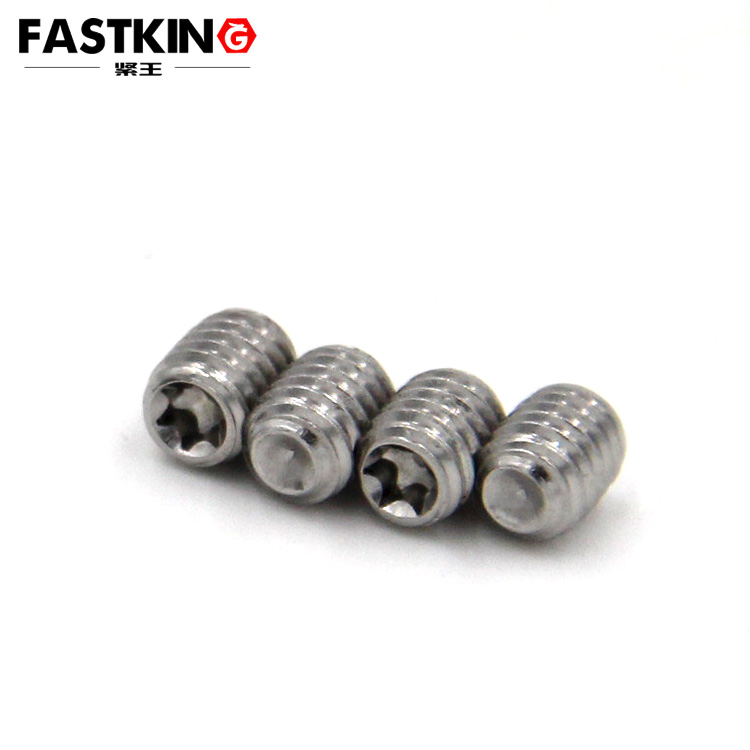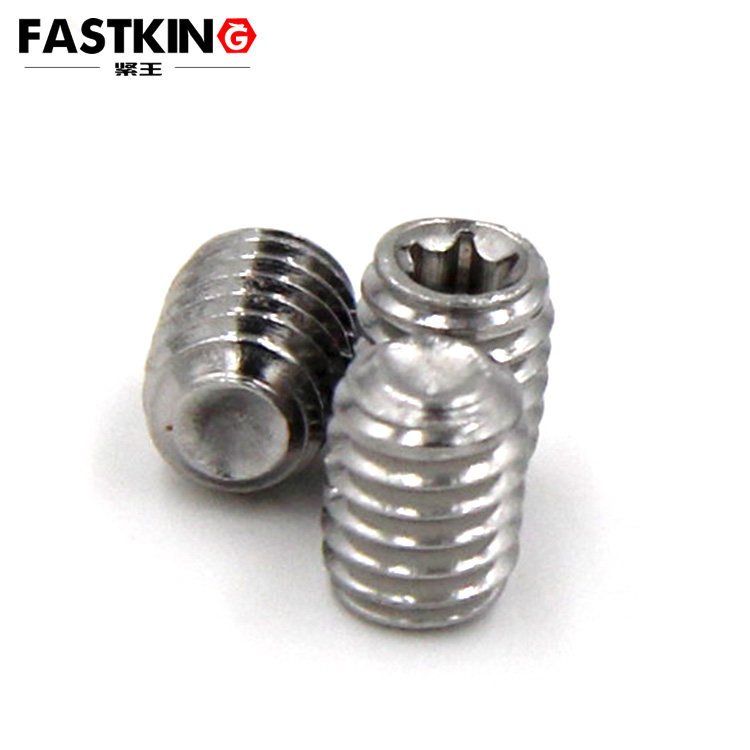- Torx screw,torx machine screw,torx self tapping screw
- sales@jlfastener.com
Torx set screw
Torx set screw in the concave end
- Description: Among fasteners, there is a type that doesnot rely on "through-type connection" but can achieveprecise positioning and reliable locking of components through its unique structure - it is the cup-poi
1. Material Selection
Common materials for pan-head internal hexagon three-combination screws include carbon steel, stainless steel, etc. Carbon steel features low cost and high strength, making it suitable for general industrial environments and the installation of indoor conventional equipment. However, it should be noted that ordinary carbon steel is prone to rust in humid and corrosive environments. In such cases, carbon steel screws with special surface treatments (e.g., galvanizing, black oxide coating) can be considered to enhance their rust resistance.
Stainless steel stands out for its excellent corrosion resistance. For example, the commonly used 304 stainless steel can maintain good performance in general humid and weak acid-alkali environments; 316 stainless steel has even better corrosion resistance, making it suitable for extremely harsh environments such as strong acid-alkali and high salt spray. Equipment like chemical machinery and marine engineering facilities often adopt 316 stainless steel screws.
2. Size Adaptation
Choosing the correct screw size is crucial. First, regarding the diameter, ranging from small specifications such as #2 and #3 to M2-M10 or even larger sizes, the selection should be based on the thickness, strength of the connected components, and the required fastening force. For instance, connecting thin circuit boards inside electronic devices may only require small-diameter screws of #4-#6; while connecting heavy metal components in mechanical manufacturing calls for large-diameter screws of M6 or above.
In terms of length, it is necessary to ensure that after the screw is screwed in, it can firmly connect the components without protruding excessively—this avoids safety hazards or aesthetic issues. Generally, the length of the screw should be 2-3 thread pitches longer than the total thickness of the connected components to meet the requirement of effective fastening.
3. Considerations for Surface Treatment
Surface treatment not only affects the screw’s appearance but also determines its protective performance. Galvanizing is a common treatment, including blue-white zinc plating, colored zinc plating, black zinc plating, etc., which can provide a certain level of rust resistance. Among these, colored zinc plating has relatively stronger corrosion resistance and is widely used in ordinary outdoor facilities; black zinc plating offers a more textured appearance and is often used in products with aesthetic requirements.
Coating treatments such as Dacromet and Geomet have superior salt spray resistance and high-temperature resistance, which can effectively extend the service life of screws in harsh environments. They are suitable for scenarios like automobile chassis and power transmission towers—facilities that are exposed to wind, rain, and high-temperature operations for a long time. In addition, there are electrophoretic coating, Teflon coating, etc. The former improves the screw’s decorativeness and protection, while the latter has a low friction coefficient and non-stick property, making it suitable for connecting mechanical components with special friction requirements.

4. Structure and Performance Matching
The pan-head design provides a large pressure-bearing area, which distributes pressure evenly to prevent damage to the surface of connected components. It is suitable for connecting fragile materials such as wood and plastic. The internal hexagon socket, when used with an Allen wrench, achieves high torque transmission efficiency, can withstand large fastening forces, and has excellent anti-slip and anti-disassembly performance—meeting the needs of high-precision assembly and safety.
In the three-combination structure (screw, spring washer, flat washer), the flat washer increases the contact area to enhance connection stability; the spring washer uses elastic deformation to generate friction, achieving effective anti-loosening and performing well in vibrating environments. If the application scenario involves severe vibration, more attention should be paid to the quality of the spring washer—select products with good elasticity and moderate hardness.
5. Reference Standards and Certifications
When purchasing, ensure the product complies with relevant national standards or industry standards, such as GB/T 818 (Standard for Cross Recessed Pan Head Combined Screws). Standardized products offer better guarantees in terms of dimensional accuracy and mechanical performance. Meanwhile, check if the product has quality certifications, such as ISO quality management system certification and RoHS environmental certification. Certified products indicate that they meet the corresponding requirements in the production process and environmental indicators, ensuring more reliable quality.
6. Brand and Supplier Selection
Prioritize brands with a good reputation and high popularity—such brands usually focus on product quality control, equipped with advanced production technology and strict testing processes. A reliable supplier should have sufficient inventory to meet procurement needs in a timely manner and provide comprehensive after-sales services, such as return and exchange guarantees and technical consultation. This facilitates timely solutions when problems arise during use.
When purchasing pan-head internal hexagon three-combination screws, comprehensively considering the above factors and balancing pros and cons will help select the most suitable product for your needs, ensuring stable connection and long-term reliable operation of the equipment.


